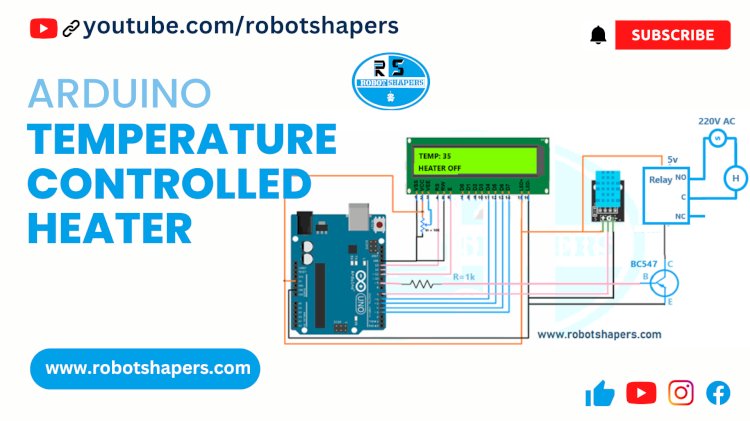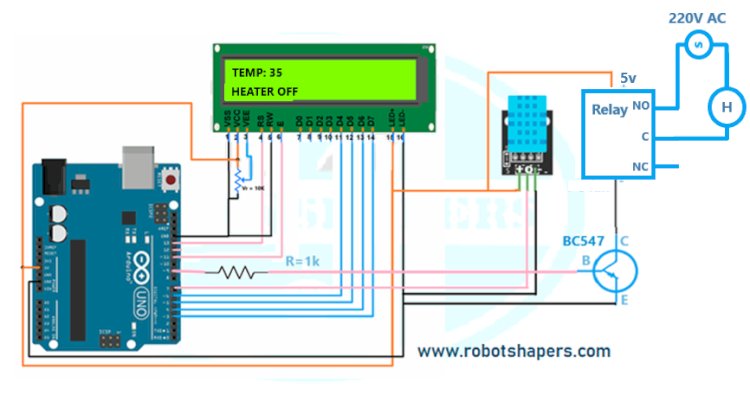Temperature Controlled Room Heater
Welcome to Robotshapers! make your devices smarter than regular one you use. Every one wants smart controlled appliances in home. In our projects we are making a heater with Arduino circuit interfaced with DHT11 temperature sensor. The temperature control in heater makes it comfortable to use and also it will be power saving.

The temperature controlled room heater is a smart heater that can adjust the heat output according to the temperature desired by the user. It provides a comfortable and warm environment while operating the energy. Here are some details on how it works:
The room heater has a heater, a thermometer and a thermometer. The thermostat is programmed to control the temperature in the room. The thermostat constantly monitors the room temperature and transmits the data to the thermostat.
When the room temperature drops below the set temperature, the thermostat sends electricity to the heater to generate heat. When the room temperature reaches the desired level, the thermostat lowers or turns off the heat to maintain the temperature. Some advanced room heaters may have additional features such as timers, remote control and energy saving modes. They may also include safety features such as heat protection and safety protection.
With a thermostat that controls room heating, users can enjoy a warm and comfortable environment without having to adjust the heating.
Helps save energy by preventing overheating and eliminating the need to adjust the temperature.
Components Required:
- Arduino Uno
- DHT11 temperature Sensor
- 5V Relay
- BC547 Transistor
- 16 x 2 LCD Display
- 10k Variable resistor
- Heater bulb or Coil
Circuit Diagram:

Code:
#include
LiquidCrystal lcd(13,11,6,5,4,3);
#include
#define DHTPIN 7
#define H 9
#define DHTTYPE DHT11
DHT dht(DHTPIN, DHTTYPE);
void setup() {
Serial.begin(9600);
dht.begin();
lcd.begin(16,2);
pinMode(H,OUTPUT);
}
void loop() {
float Temp = dht.readTemperature();
lcd.setCursor(0,0);
lcd.print("TEMP:");
lcd.print(Temp);
if(Temp<25)
{
lcd.setCursor(0,1);
lcd.print("Heater: ON ");
digitalWrite(H,HIGH);
}
if(Temp>25)
{
lcd.setCursor(0,1);
lcd.print("Heater: OFF ");
}
}
The code above clears the algorithm according to temperature and heater Here we have used two libraries first for DHT sensor and second is for liquid crystal display. The codes are very simple to explain and very easy to edit.
Applications:
Room temperature control heater systems have many uses and benefits in many areas. Some of the main uses for these heating solutions are:
- Residential Use: Room heaters are often used to provide comfortable heating in homes during the colder months.
- Offices: Offices also use room heaters to control indoor air.
- Treatment: Hotels, resorts and other hospitality facilities benefit from room temperature control.
- Commercial Buildings: Air-conditioned rooms are used in commercial buildings such as shops, restaurants, healthcare facilities.
- Colleges: Schools, colleges and universities use indoor heating to make classrooms and workspaces comfortable.
Best projects in Bhilai, Chhattisgarh, India. Contact: 7067150002

 robotshapers1
robotshapers1 

















